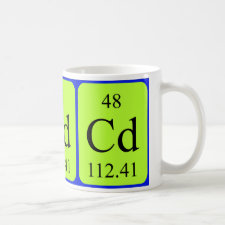
Authors: Rahangdale D, Kumar A, Archana G, Dhodapkar RS
Article Title: Ion cum molecularly dual imprinted polymer for simultaneous removal of cadmium and salicylic acid.
Publication date: 2018
Journal: Journal of Molecular Recognition
Volume: 31
Issue: (3)
Page numbers: ArticleNoe2630.
DOI: 10.1002/jmr.2630
Abstract: Ion cum molecularly dual imprinted polymer (DMIP) was synthesized for the simultaneous removal of salicylic acid (SA) and cadmium (Cd) by suspension polymerization method using chitosan (CTS) as functional polymer, epichlorohydrin as cross-linker, and 4-hydroxy benzoic acid (4HBA) as well as Cd as organic and inorganic templates, respectively. Use of the dummy template 4HBA during the synthesis of DMIP had the advantage of creating imprinted cavities in DMIP, which depicted good uptake for SA. Scanning electron microscopy and Fourier transform infrared spectroscopy indicated successful preparation of DMIP. Particle size analysis confirmed polydispersity, and thermal and swelling studies indicated the mechanical stability in DMIP. The rebinding capacities of the DMIP for Cd and SA were found to be 38.46 and 23.81 mg g-1, respectively, under the optimize condition of the time, dose, and concentration. Adsorption isotherm results fitted into Langmuir adsorption isotherm model with the R2 values of 0.994 and 0.995 for Cd and SA, respectively. The presence of intramolecular hydrogen bonding in SA, stability of the template-monomer complexes (CTS-SA and CTS-4HBA), and the involvement of the hydroxyl groups on DMIP for the uptake of SA has been supported by molecular modeling studies using Gaussian 03 software. The electron doublet of the amino groups of DMIP was involved for the uptake of Cd. Lower binding efficiency of DMIP for SA as compared to Cd may be due to the partial participation of hydroxyl group in cross-linking with epichlorohydrin during the synthesis of DMIP
Template and target information: dual template, cadmium ion, Cd(II), 4-hydroxybenzoic acid, 4HBA, salicylic acid, SA, 2-hydroxybenzoic acid
Author keywords: 4-hydroxy benzoic acid, cadmium, chitosan, dummy template, ion cum molecularly dual imprinted polymer, molecular modeling, salicylic acid, suspension polymerization



Join the Society for Molecular Imprinting

New items RSS feed
Sign-up for e-mail updates:
Choose between receiving an occasional newsletter or more frequent e-mail alerts.
Click here to go to the sign-up page.
Is your name elemental or peptidic? Enter your name and find out by clicking either of the buttons below!
Other products you may like:
 MIPdatabase
MIPdatabase









